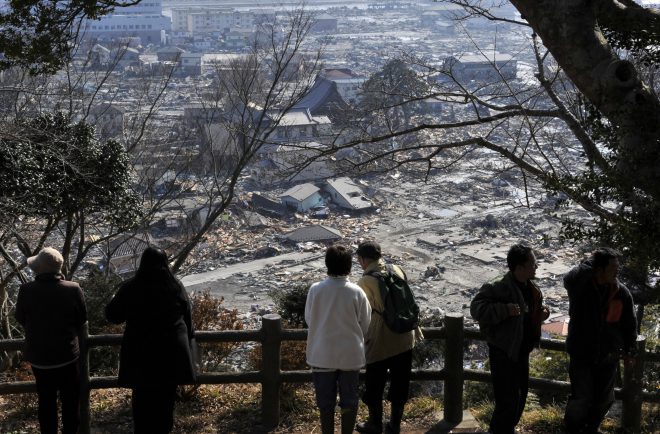Solitary deaths increasing in disaster recovery housing
March 6, 2018
Sendai, Miyagi Pref.- An increasing number of residents of so-called disaster recovery public housing are dying unattended in Iwate, Miyagi and Fukushima, the three northeastern Japan prefectures hit hardest by the March 2011 earthquake and tsunami.
Such incidents apparently reflect difficulties building new communities.
The three prefectures have plans to build a total of 30,000 units of such public housing as long-term dwellings of displaced disaster victims. Of them, 90 percent have been completed and almost all of the remainder are expected to become available by the end of March 2019.
Some 40 percent of the residents of disaster recovery housing are aged 65 or above in all of the three prefectures, higher than the share of the age group in the population of each prefecture.
As many housing units are apartments divided by thick walls, residents may not easily notice changes in the daily routines of their neighbors.
Disaster recovery housing residents who lived alone and were discovered at home after death numbered 14 in the three prefectures in 2015, up from only one in Iwate in 2013. The annual figure shot up to 53 in 2017, with the accumulated total through that year reaching at least 97.
In one of the public apartment buildings for disaster victims in Sendai, Miyagi Prefecture, residents started to arrive in 2014 to occupy all 28 units.
Since then, four have died, and two of them were unattended.
A resident in his 60s was found dead by a friend who paid a visit about 10 days after he died in October 2017.
According to other residents, the man lost his mother in the tsunami, never joined local cleaning activities organized by a residents' association and did not interact much with others living in the same building.
"The disaster is not yet over," said Yukio Matsuya, 65, who was serving as a district head of the association at the time of the man's solitary death. "We moved in with joy, but now I feel intolerable anger."
"As disaster victims, including myself, each face their own situations, building relationships takes time," Matsuya said.
Municipalities have been strengthening their efforts to keep an eye on residents of such housing and support the activities of community associations.
But the state-set reconstruction period for the disaster-hit areas are due to finish at the end of fiscal 2020. It is uncertain whether central government subsidies for disaster victims will be maintained.
Under the circumstances, some residents have started attempts themselves to increase opportunities to interact with each other.
At a different public apartment building in Sendai where a solitary death was reported in September 2015, Kiyoshi Kawana, a 69-year-old neighborhood association leader, holds tea parties for elderly residents aged 70 or older who are living alone.
Some residents were not initially eager to attend such parties but are now looking forward to the monthly occasions.
"If we create opportunities to meet, we will know whether the others are doing well," Kawana said. "We can help the weak through mutual support." Jiji Press
Latest Videos
- THE UNTOLD STORY EXPERT INSIGHTS INTO THE UKRAINE
- NEGOTIATING A NEW ORDER US RUSSIA TALKS ON UKRAIN
- Ukraine: A Pawn in the Geopolitical Game? Will Trump Intervene?
- US VP VANCE CRITICIZES EUROPEAN DEMOCRACIES AT MUNICH SECURITY CONFERENCE
- UNCOVERING THE WEB OF DECEIT: CIA INFILTRATION OF THE MEDIA
- SHIFTING SANDS: TULSI GABBARD’S CONFIRMATION AND THE EVOLVING GLOBAL LANDSCAPE
- FAUCI SCANDAL: A THREAT TO GLOBAL HEALTH AND DEMOCRACY






